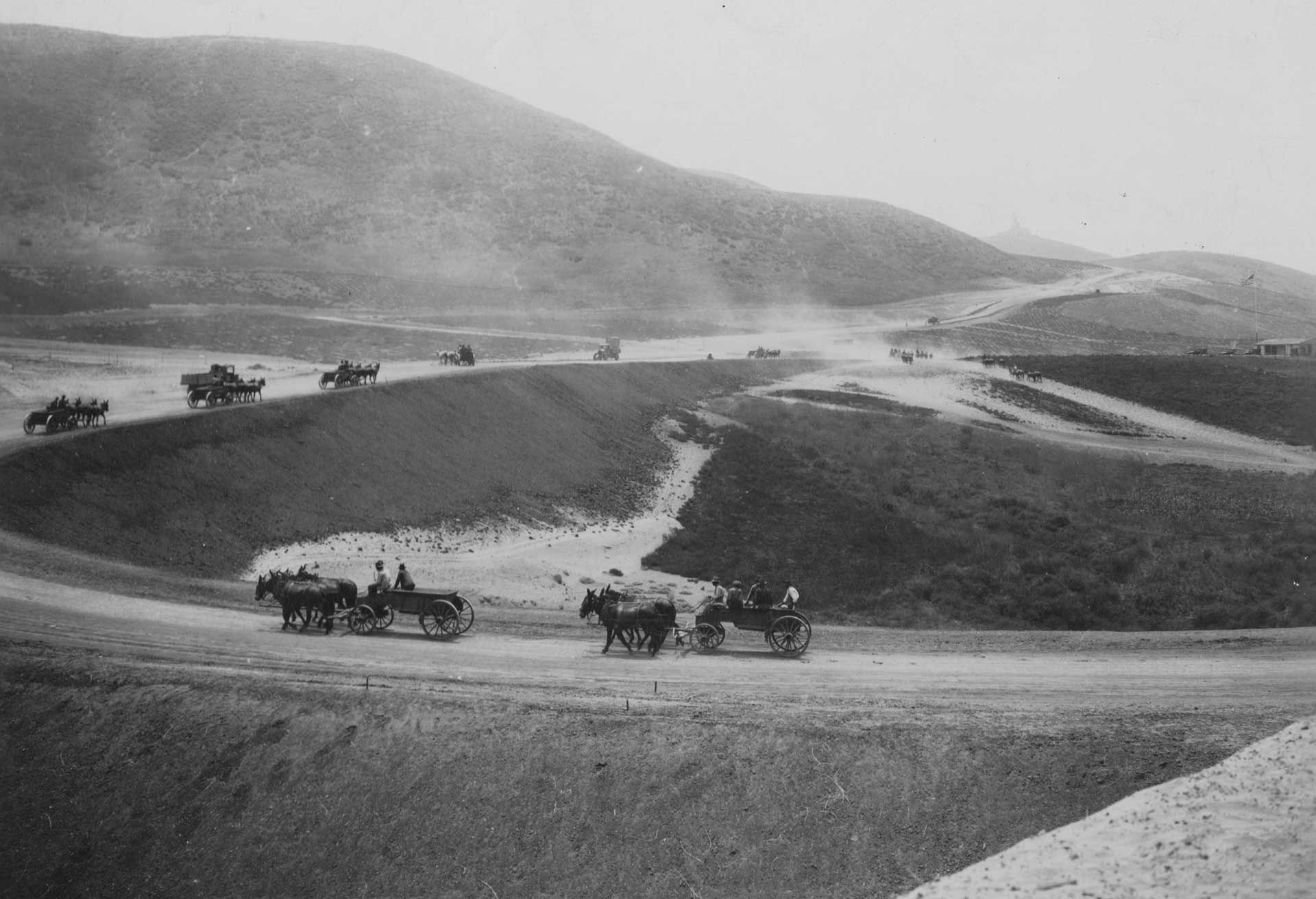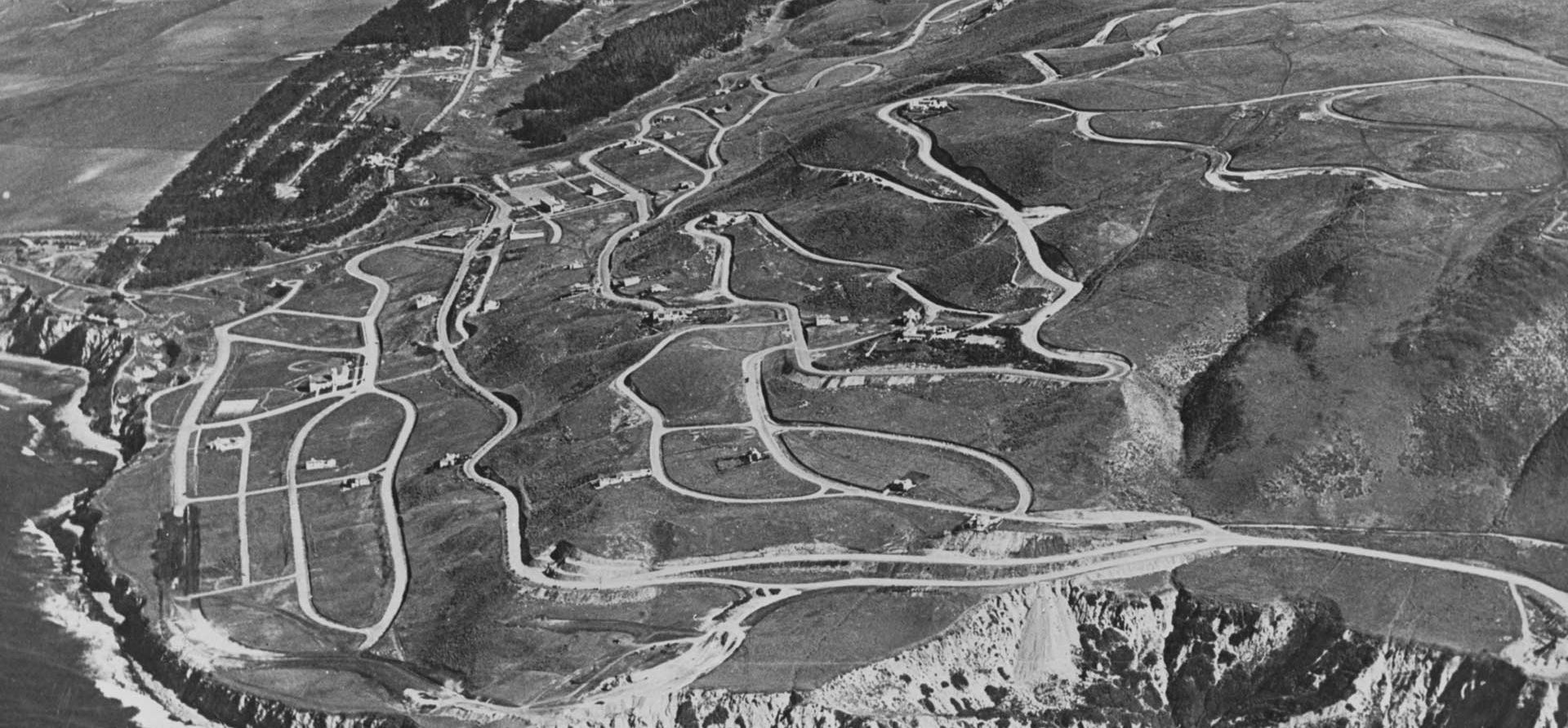The grandeur of the California coastline developed at an evolutionary pace. Literally. It’s hard to imagine, but the peninsula we now know as Palos Verdes was once buried under the Pacific Ocean, along with the entire Los Angeles basin. As seismic and volcanic activity occurred and tectonic plates shifted, mountain ranges formed, sedimentary deposits were made and gradually land masses emerged to form the landscape on which we now reside.
At one time, Palos Verdes was actually an island—part of the Channel Island archipelago that today still comprises eight islands, including those off the coast of Ventura as well as Catalina, San Clemente and their neighboring islands. In true Darwinian fashion, this evolutionary connection firmly established as Palos Verdes shares much of the same indigenous flora and fauna found only on these local islands.
Throughout the ages, several civilizations prior to our own recognized the beauty and convenience of the Peninsula’s land. Excavations have discovered reminisces from at least four distinct cultures, the earliest of which could have conceivably existed more than 50,000 years ago. More recently (if 500 years can be considered recent), the Gabrielino Native American tribe, named by early Spanish explorers after the nearby San Gabriel Mission, called the area home. It was the last known Native American tribe to inhabit the region.
 The first European to set eyes on a California coastline, Portuguese explorer Juan Rodríguez Cabrillo sailed into San Pedro Bay, just south of Rancho Palos Verdes, on October 8, 1542. After navigating a treacherous, four-month voyage on behalf of the Spanish monarchy, Cabrillo guided his fleet of two ships, the Victoria and the San Salvador, toward land, though neither ever actually docked in San Pedro. This first glimpse of California by European explorers was in pursuit of discovering a mythical “Northwest Passage” connecting the Pacific and Atlantic. Having failed by Spain’s standards, Spanish expeditions to the region became significantly less frequent.
The first European to set eyes on a California coastline, Portuguese explorer Juan Rodríguez Cabrillo sailed into San Pedro Bay, just south of Rancho Palos Verdes, on October 8, 1542. After navigating a treacherous, four-month voyage on behalf of the Spanish monarchy, Cabrillo guided his fleet of two ships, the Victoria and the San Salvador, toward land, though neither ever actually docked in San Pedro. This first glimpse of California by European explorers was in pursuit of discovering a mythical “Northwest Passage” connecting the Pacific and Atlantic. Having failed by Spain’s standards, Spanish expeditions to the region became significantly less frequent.
It would be more than a century and a half before another European ship would journey into the waters off the Palos Verdes Peninsula. After heeding the explorative advancements by Russia and England, Spain finally set out to establish a colony near the coast of Southern California. With heavy influence by the Catholic Church, the Mission San Gabriel Arcángel was founded in 1771, inland from the Pacific coast, with help from the native Gabrielinos. It was the fourth of what would eventually become 21 Spanish missions in California. This mission would lay the groundwork for Pueblo de Los Angeles and attract families of farmers to venture the 1,000-mile journey from their homes in Mexico to develop the new settlement.
One such man was Juan José Domínguez, a retired Spanish soldier who had surveyed the land several years prior during a Spanish expedition. In 1784, it was Domínguez who requested and was awarded the first private land concession in Southern California, the Rancho San Pedro. This territory consisted of 75,000 acres of land, stretching from the present-day cities of Compton and Gardena to Long Beach and San Pedro, as well as the entire Palos Verdes Peninsula. Throughout the next 150 years, the local area, now known as Rancho Palos Verdes, played host to early land tycoons, families of agriculturists and cattle farmers and sea voyagers.
By the early 1900s, much of the Palos Verdes Hills lay sprawling and unoccupied, serving mainly as a grazing ground for sheep and cattle. Japanese families were offered patches of rented land on which to grow crops, and infrastructure slowly began to emerge. By the 1920s, commercial development of the land ignited, and measures were taken to entice prospective buyers to invest in the Palos Verdes Project and build homes and community areas.
In 1923, the La Venta Inn was constructed as a clubhouse of sorts to entertain these potential investors. It was one of the first modern-day structures built in the area and still stands as an architectural glimpse of the early Rancho Palos Verdes.
Finally recognizing that the shallow waters and rocky cliffs off the Palos Verdes Peninsula coastline were treacherous to navigate by sea, the Point Vicente Lighthouse was erected in 1926 to guide ships more safely into the harbor. With a 1,000-watt bulb, the lighthouse became the brightest beacon in Southern California. During WWII, the light was replaced with a 25-watt bulb and had black-out curtains at the ready so as not to aid enemy navigation. Local myth had it that if you looked carefully at the lighthouse at night, you could see the ghostly “Lady of the Light” pacing in the lighthouse tower. This popular tenant moved out of the lighthouse in 1955, when a thicker coat of paint was applied to the glass, making the home too dark for any self-respecting spirit.

Another famous resident of Ranchos Palos Verdes is King Neptune. In 1930, an exact replica (though only two-thirds the size) of the Neptune Fountain in Bologna, Italy was unveiled as a gift to the community in the Malaga Cove Plaza, north of the resort. The fountain was crafted in Venice, Italy more than 100 years earlier before being brought to the Peninsula. In 1969, the fountain had to be replaced by a replica after the original fell into disrepair.
While Italian and Spanish artisans influenced much of Rancho Palos Verdes’ early architectural landscape, some of the most beautiful hallmarks of the area enjoy more modern roots. Perhaps one of the most notable structures is the Wayfarers Chapel. Designed in 1951 by Lloyd Wright, son of famed architect Frank Lloyd Wright, the church is constructed almost entirely of glass. This unique architectural feature allows the walls and ceiling to appear as though they are living, surrounded by massive redwood trees.
When one of the nation’s first amusement parks featuring spectacular marine life was envisioned, the unparalleled beachfront location of Portuguese Bend on Palos Verdes Peninsula seemed the perfect choice. Opening in 1954, one year before Disneyland, Marineland of the Pacific drew visitors from all over the world to see the park’s live sea mammal shows and oceanarium exhibits. After its closing in 1987, the Marineland site lay practically dormant for 20 years on one of the world’s most naturally beautiful and historically vibrant coastlines.
Auspiciously, development of the property was ultimately entrusted to Lowe Destination Development (LDD), a subsidiary of Lowe Enterprises. LDD is recognized throughout the building industry as a leader in green and sustainable development. And so began a 13-year journey to transform the abandoned park into Terranea, an exquisite resort destination that epitomizes how development and environmental interests can effectively coincide.
A certified member of the U.S. Green Building Council, LDD integrates green and sustainable building practices throughout its projects, from using energy-efficient technologies and recycling construction materials to landscaping with indigenous plants and implementing Best Management Practices. This approach to development as an enhancement versus a hindrance to our environment has earned LDD the respect and support of entities not typically fans of developers. As Todd Majcher, Terranea’s vice president/development manager, explains it, “We wanted the resort to contextually fit within the area. Standing at the resort, guests should be able to glance back to the hillsides of the peninsula beyond and see it as a contiguous area with no discernible point of where the resort ends and the environs begin.”
Terranea Resort joins the long and proud legacy of this remarkable peninsula, embodying all the tenets that distinguish Palos Verdes: a dedication to the area’s heritage and aesthetic, a deep reverence for the peninsula’s inimitable and precious environment, and a commitment to sharing the region’s beauty with all those who visit this extraordinary place.
Written by Michele Garber and Preston Ames

















